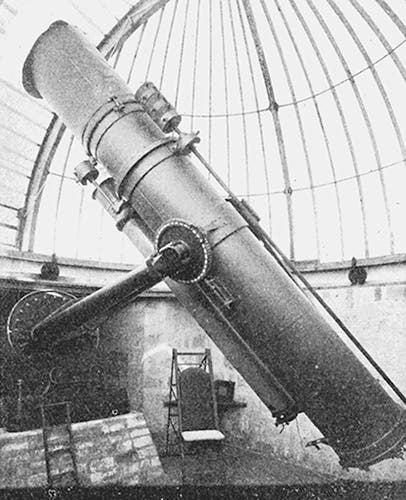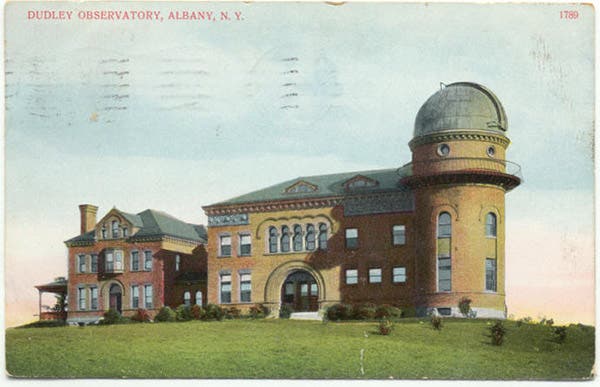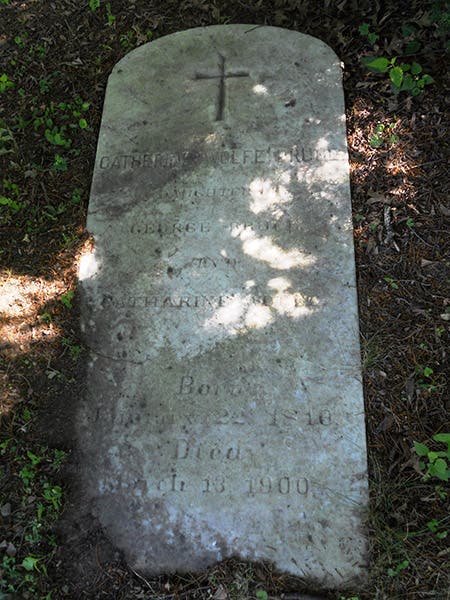Scientist of the Day - Catherine Wolfe Bruce
Catherine Wolfe Bruce, an American philanthropist and patron of astronomy, was born Jan. 22, 1816. Her father was an immigrant to New York who invented several desirable new type fonts and made a fortune, which Catherine inherited. She wanted to distribute her wealth to worthy causes, and she seems to have had a latent interest in astronomy, for one day she saw a leaflet published by the Alvan Clark firm of telescope makers, and she wrote a letter of inquiry, perhaps asking what she could do with her money. Clark put her in touch with Edward Pickering at Harvard, who had already issued a plea for donors for a new 24” photographic telescope, or astrograph, that he desperately wanted to build. Pickering called on Miss Bruce in Manhattan in 1889, told her that the telescope he had in mind would cost $50,000, and explained why it was needed (as the largest astrograph in the world, it would allow the photographing of objects never before captured on photographic plates). Catherine Bruce agreed on the spot to finance the construction. Pickering was a happy man.
It took some years (the four glass disks for the lenses had to be cast in Paris, and there were many problems getting them), but the telescope was finally completed in 1893, tested at Harvard, and then conveyed to Arequipa, Peru, in South America in 1896, where it was set up on the top of a mountain and was used to photograph the heavens for the next 30 years (second image). Pickering kept Miss Bruce fully informed throughout the entire lengthy process, and she seems to have been well pleased with what her money had bought. In 1927, the Bruce telescope was moved to Bloemfontein, South Africa, where it continued in operation until 1950.
Catherine Bruce asked Pickering what else she could do, and they decided to support, with small grants, any worthy astronomer who came to them with a proposal; Pickering did the choosing, and Miss Bruce provided the funds. There were many, many of these grants. And there were some bigger ones. In 1892, the Dudley Observatory in Albany needed to move – the railroad tracks which now ran by their old dome made photographic work impossible – and Miss Bruce gave them $35,000 for a new building on a more remote site, which I believe still stands, even though the observatory has moved again several times (third image). And then, Edward Barnard at the Yerkes Observatory in Williams Bay, Wisconsin, lobbied for a new telescope so he too could photograph the entire heavens, and Miss Bruce paid for the purchase of yet another astrograph. With his new instrument, Barnard completed his Photographic Atlas of Selected Regions of the Milky Way, published in 1927, a copy of which resides in our Rare Book collection.
Somewhere along the line, Miss Bruce was also persuaded to provide a photographic telescope to the observatory in Heidelberg, Germany. Max Wolf, the astronomer there, had earlier named an asteroid after her, 323 Brucia, and perhaps this was her way of saying thanks. The Heidelberg double astrograph (fourth image) is, we believe, still operational.
Her final act of generosity (before her death in 1900) was to provide $2750 to the Astronomical Society of the Pacific (ASP) to fund an award, to be given for lifetime achievement in astronomy. The Bruce Medal has been awarded annually for 120 years and it is one of the most prestigious awards an astronomer can receive (first image). We note that, beginning in 1937, the next three recipients of the Bruce Medal were Ejnar Hertzsprung, Edwin Hubble, and Harlow Shapley. It is hard to find three more distinguished astronomers than these.
The real mystery of Catherine Wolfe Bruce is why she is so little known. The Bruce Medal is greatly respected, but the woman behind it is elusive. Her role in funding the observatories at Harvard, Albany, and Yerkes have been acknowledged by the historians of those institutions, but otherwise, it is difficult to find out anything about her life or personality. We don’t even have a portrait; the ones you see on Wikipedia or elsewhere do not portray Miss Bruce. The one recent bright spot is Dava Sobel’s latest book, The Glass Universe (2016), where Miss Bruce gets abundant credit and we are offered some insight into her impish personality with a few quotations from her letters.
If you would like to pay homage yourself, you could visit her gravesite at Green-Wood Cemetery in Brooklyn, where her gravestone is as simple and unadorned as the woman it commemorates (fifth image).
Dr. William B. Ashworth, Jr., Consultant for the History of Science, Linda Hall Library and Associate Professor, Department of History, University of Missouri-Kansas City. Comments or corrections are welcome; please direct to ashworthw@umkc.edu.










